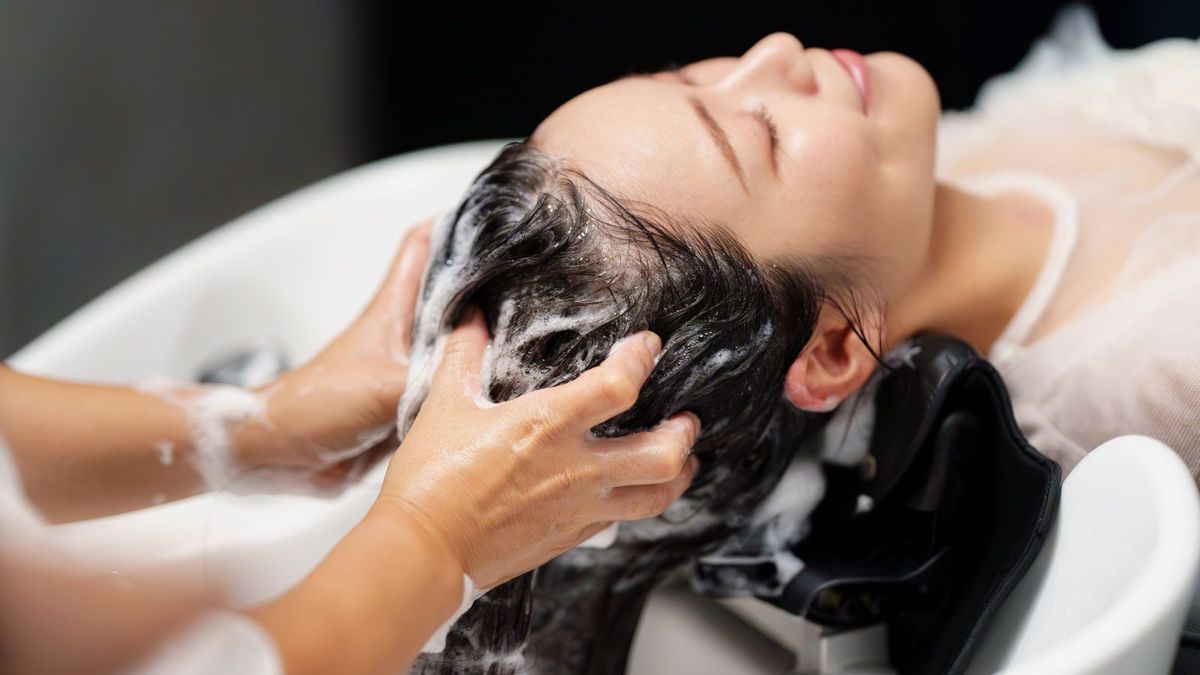
We’re often asked a deceptively simple question:
“Do I need a scalp treatment or a hair treatment?”
At first glance, the two might sound interchangeable. After all, both are forms of hair care. But the reality is, they serve very different purposes. Understanding this distinction is crucial, especially if you’re experiencing hair loss, scalp discomfort, or simply looking to improve the overall health and appearance of your hair.
At Wellkin, our approach is always holistic and customized. Hair care isn’t about one-size-fits-all solutions. It’s about understanding the root cause of your concerns and addressing them thoughtfully. That starts with distinguishing between the health of your scalp and the condition of your hair.
Why Scalp Health Should Come First


Before we begin to nourish or treat the hair strands, it's vital to ensure that the environment they grow from—the scalp; is healthy and balanced.
The scalp is home to hair follicles, the tiny but powerful structures that determine how your hair grows, how long it lasts, and how strong it is. If the scalp is inflamed, congested, or compromised, those follicles can become weak, undernourished, or even dormant.
Prioritizing scalp health first ensures that:
Hair grows stronger, denser, and more resilient from the follicle
Treatments applied to the strands can work more effectively
Scalp sensitivity, oiliness, or flaking are resolved at their origin
Long-term hair vitality is supported through foundational care
Our belief at Wellkin is that beauty is built at the root. By investing in the health of your scalp, you’re setting the stage for sustainable hair health and beauty that endures.
Scalp Treatments: Where Hair Health Begins

Think of the scalp as the soil from which your hair grows. Just as plants need nutrient-rich, well-aerated soil to thrive, your hair depends on a healthy scalp to grow strong and vibrant.
Over time, various factors can compromise scalp health:
Buildup of styling products and pollutants
Hard water residue
Poor circulation
Hormonal changes
Stress or poor lifestyle habits
These factors can clog hair follicles, disrupt sebum production, and lead to inflammation. The result? Hair that is dull, lifeless, thinning, or falling at an accelerated rate.
Professional scalp treatments at Wellkin include:

Here’s the updated section with the correct treatment names reflecting the services you provide:
Hair Consultation: A personalized session where your scalp and hair health is carefully evaluated to determine the most effective treatment plan.
Scalp Purification Therapy: Deep cleansing that detoxifies the scalp, removing buildup and impurities to refresh the foundation for hair growth.
Scalp Rebalancing Therapy: Restores the natural balance of the scalp, soothing irritation and promoting a healthy environment for hair follicles.
Hair Strength & Revitalization Therapy: Nourishes and strengthens hair strands to improve texture, shine, and manageability.
Hair Regeneration Therapy: Targets hair follicle health to stimulate growth and combat thinning with advanced, clinically-backed treatments.
This treatment is both scientific and sensorial. It resets the scalp environment, allowing your hair to grow in an ideal ecosystem.
Hair Treatments: Enhancing What You See
While scalp treatments work beneath the surface, hair treatments focus on the visible part of the hair — the shaft. These treatments aim to improve the condition, appearance, and manageability of the hair that has already grown out from the follicles.
Hair can be damaged by:
Heat styling (straightening, curling, blow-drying)
Chemical processing (color, bleach, perm)
Environmental exposure (sun, wind, pollution)
Daily wear and tear (brushing, friction)
A hair treatment works to repair, restore, and rejuvenate hair that has been stressed or compromised.

A premium hair treatment typically includes:
Moisture-Intensive Masks: Replenish hydration and restore elasticity to dry, brittle hair.
Reconstructive Formulas: Contain proteins like keratin or silk amino acids to strengthen weak strands.
Cuticle Smoothing Agents: Help seal the outer layer of the hair, reducing frizz and enhancing shine.
Leave-In Treatments: Provide ongoing protection against further damage from styling and environmental exposure.
These treatments are ideal for clients who are happy with their scalp health but want their hair to look smoother, glossier, and more manageable.
The Synergy: Why You May Need Both

At Wellkin, we believe in harmony and personalization. In many cases, both scalp and hair treatments are needed to achieve optimal health and aesthetics.
Why choose between foundation and finish when you can have both?
A comprehensive treatment session includes:
Scalp Detox: Deep cleanse to remove buildup and excess oils
Follicle Nourishment: Application of serums and massage therapy to support scalp health
Strand Repair: Hydrating or protein-based masks to repair and restore the hair shaft
Protection & Shine: Leave-in oils and sealing agents to lock in moisture and maintain results
This combination offers not just instant gratification but long-term transformation. You leave feeling renewed, inside and out.
Scalp Treatment vs Hair Treatment Final Reflections: Begin at the Root

There is no single solution to achieving healthy, radiant hair. The process is personal, intentional, and deeply connected to the health of your scalp.
At Wellkin, we treat hair care as a ritual, not a routine. A journey, not a transaction. We invite you to begin this journey with us — discreetly, confidently, and sincerely.
Our team of specialists is here to guide you through a private, customized consultation that will determine the right path forward, from scalp diagnostics to restorative care.
True beauty doesn’t chase trends. It begins at the root.
Frequently Asked Questions (FAQs)
1. How do I know if I need a scalp treatment or a hair treatment?
If you're noticing issues like excessive oiliness, itchiness, flaking, or increased hair shedding, a scalp treatment is likely the best place to start. If your primary concerns are frizz, dryness, or lack of shine, a scalp treatment may be more suitable. Often, combining both yields the best results. A consultation with our specialists will help determine your exact needs.
2. How often should I get a scalp treatment?
We typically recommend weekly scalp treatments during the initial phase to improve scalp health, remove buildup, and activate follicles. As your scalp improves, treatment frequency can be reduced. Our specialists will create a schedule tailored to your condition.
3. Will a scalp treatment help with hair loss?
Yes. While not a cure for medical hair loss conditions, scalp treatments improve circulation, unclog follicles, and create the right environment for healthier hair growth. They are especially helpful when integrated into a broader hair restoration plan & scalp treatment.
4. Are scalp treatments safe for sensitive skin or scalp conditions like psoriasis or eczema?
Absolutely. At Wellkin, we use dermatologist-formulated, gentle products. Each scalp treatment is customized after an in-depth scalp analysis to ensure it's safe and effective for your specific condition.
5. Can I combine a hair & scalp treatment in one session?
Yes. In fact, many clients opt for this combined approach. It allows for a complete experience that nurtures both the scalp and the strands. Our scalp treatment specialists will adjust the protocol based on your hair and scalp condition.
6. How long do the scalp treatment results last?
You may feel immediate improvements after one session, but sustainable results come with consistency. Most clients see noticeable differences in density, scalp comfort, and hair resilience after a few scalp treatments.
7. Is the scalp treatment suitable for everyone?
Scalp treatment is beneficial for everyone, regardless of age or hair type. However, at present, our Dubai center caters exclusively to women. We are evaluating future options to extend our services more broadly and appreciate your understanding.


Share:
The Wellkin Scalp Reset: A Multi-Step Korean Therapy
Healing Hair from Within: A Wellness-Based Approach to Stress and Hormonal Hair Loss